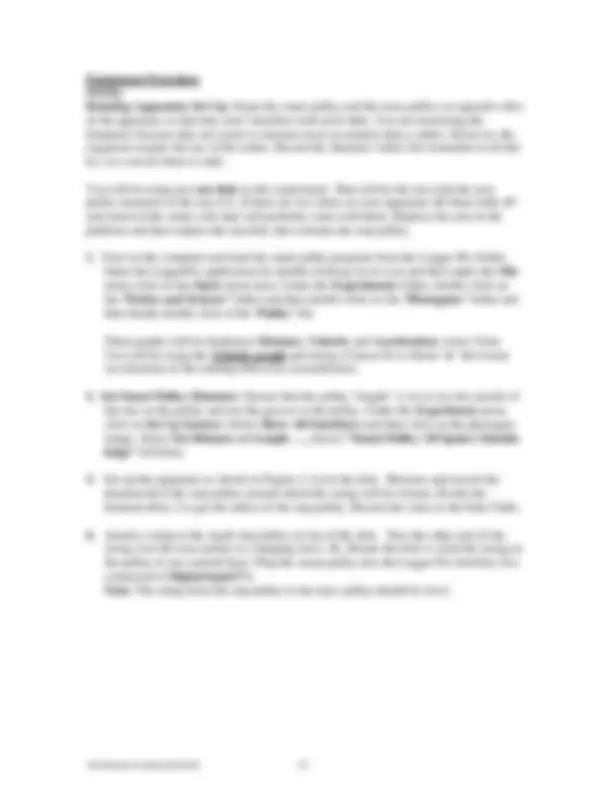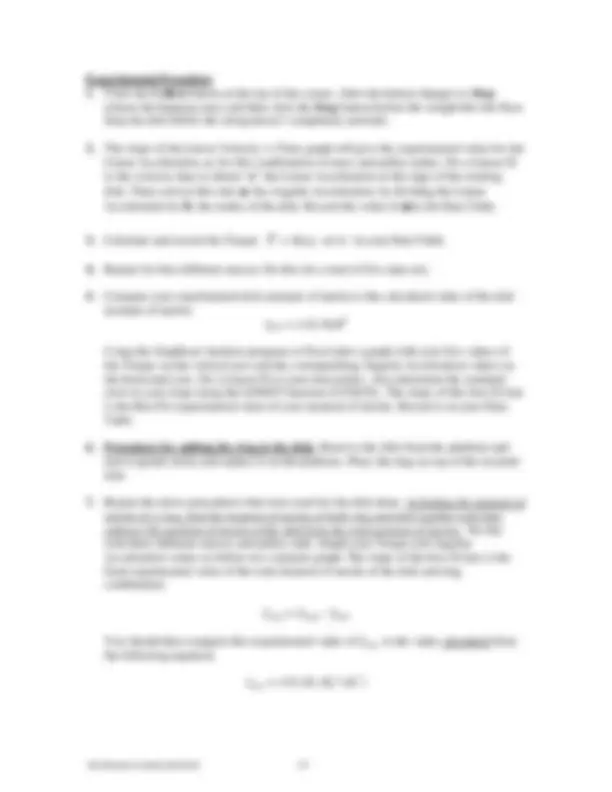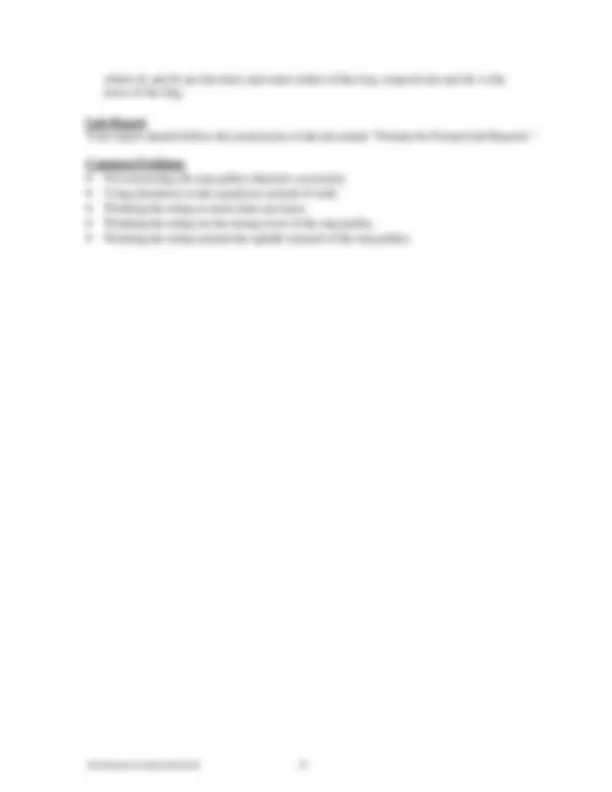





Study with the several resources on Docsity

Earn points by helping other students or get them with a premium plan


Prepare for your exams
Study with the several resources on Docsity

Earn points to download
Earn points by helping other students or get them with a premium plan
Community
Ask the community for help and clear up your study doubts
Discover the best universities in your country according to Docsity users
Free resources
Download our free guides on studying techniques, anxiety management strategies, and thesis advice from Docsity tutors
A lab experiment aimed at comparing two methods for calculating the moment of inertia of a rotating object. The experiment involves using a PASCO Rotational Apparatus with a disk and a ring, and measuring the angular acceleration and torque to determine the moments of inertia. the theoretical background, equipment setup instructions, and experimental procedures.
Typology: Lecture notes
1 / 6

This page cannot be seen from the preview
Don't miss anything!




Introduction Rotating an object requires that one overcomes that object’s rotational inertia, better known as its moment of inertia. For highly symmetrical cases it is possible to develop formulas for calculating an object’s moment of inertia. The purpose of this lab is to compare two of these formulas with the moment of inertia measured experimentally for a disk and a ring.
Equipment
Computer with Logger Pro SW Bubble Level String PASCO Rotational Apparatus + Ring Vernier Caliper Mass Set Vernier Lab Pro Interface Triple Beam Balance Smart Pulley + Photogate Rubber Band
Theory If a force Ft is applied tangentially to the step pulley of radius r , mounted on top of the rotating disk, the disk will experience a torque τ
where I is the moment of inertia for the disk and α is the angular acceleration of the disk. We will solve for the moment of inertia I by using Equation 1 and then compare it to the moment of inertia calculated from the following equation: Idisk = (1/2)MdR^2 where R is the radius of the disk and Md is the mass of the disk. (Do not confuse R with r .)
We can also place a ring on top of the disk and find its moment of inertia using Equation 1. We will first experimentally find the moment of inertia of both ring and disk together and subtract the moment of inertia of the disk from the total moment of inertia of
Note: If you are also going to determine the moment of inertia of the ring then you need to perform the first portion of this lab with only a single disk. If you use both disks you will not be able to invert them and add the ring to the system. The second disk does not have mounting holes for the ring. Only the disk with the step pulley has these positioning holes for the ring.
disk and ring together. Finally, we will compare this value for the moment of inertia of the disk to the following formula: Iring = (1/2) Mr (R 02 +Ri^2 ) where Ro and Ri are the inner and outer radii of the ring respectively and Mr is the mass of the ring.
Finding Ft , the Tangential force
Ft = T
Weight = Mhg ( Mh = hanging mass, g = 9.8 m/s^2 )
Figure 1
A string will be attached to the small step pulley on top of the disk while the other end of the string will go over the smart pulley and then be attached to a hanging mass, Mh. The tangential force Ft on the disk is the tension T of the string. By studying Figure 1,
Mhg - T = Mh a
a is the acceleration of the hanging mass and a = α r where r is the radius of the step pulley used. Rearranging: T = Mh(g – a) = T = Mh(g – α r)
Figure 2
Experimental Procedure 1. Click the Collect button at the top of the screen. After the button changes to Stop release the hanging mass and then click the Stop button before the weight hits the floor. Stop the disk before the string doesn’t completely unwinds.
2. The slope of the Linear Velocity vs Time graph will give the experimental value for the Linear Acceleration, a , for this combination of mass and pulley radius_._ Do a Linear fit to the velocity data to obtain “ a ” the Linear Acceleration at the edge of the rotating disk. Then convert this into αααα , the Angular Acceleration, by dividing the Linear Acceleration by R , the radius of the disk. Record the value ofαα αα in the Data Table.
4. Repeat for four different masses. Do this for a total of five data sets. 5. Compare your experimental disk moment of inertia to the calculated value of the disk moment of inertia: Idisk = (1/2) MdR^2
Using the Graphical Analysis program or Excel plot a graph with your five values of the Torque on the vertical axis and the corresponding Angular Acceleration values on the horizontal axis. Do a Linear Fit to your data points. Also determine the standard error in your slope using the LINEST function in EXCEL. The slope of this best fit line is the Best Fit experimental value of your moment of inertia. Record it on your Data Table.
6. Procedure for adding the ring to the disk. Remove the disk from the platform and turn it upside down and replace it on the platform. Place the ring on top of the inverted disk. 7. Repeat the above procedures that were used for the disk alone. In finding the moment of inertia of a ring, find the moment of inertia of both ring and disk together and then subtract the moment of inertia of the disk from the total moment of inertia. Do this with three different masses and pulley radii. Graph your Torque and Angular Acceleration values as before on a separate graph. The slope of the best fit line is the final experimental value of the total moment of inertia of the disk and ring combination.
the following equation:
Iring = (1/2) Mr (R 02 +Ri^2 )
where Ro and Ri are the inner and outer radius of the ring respectively and Mr is the mass of the ring.
Lab Report Your report should follow the instructions in the document “Format for Formal Lab Reports.”
Common Problems